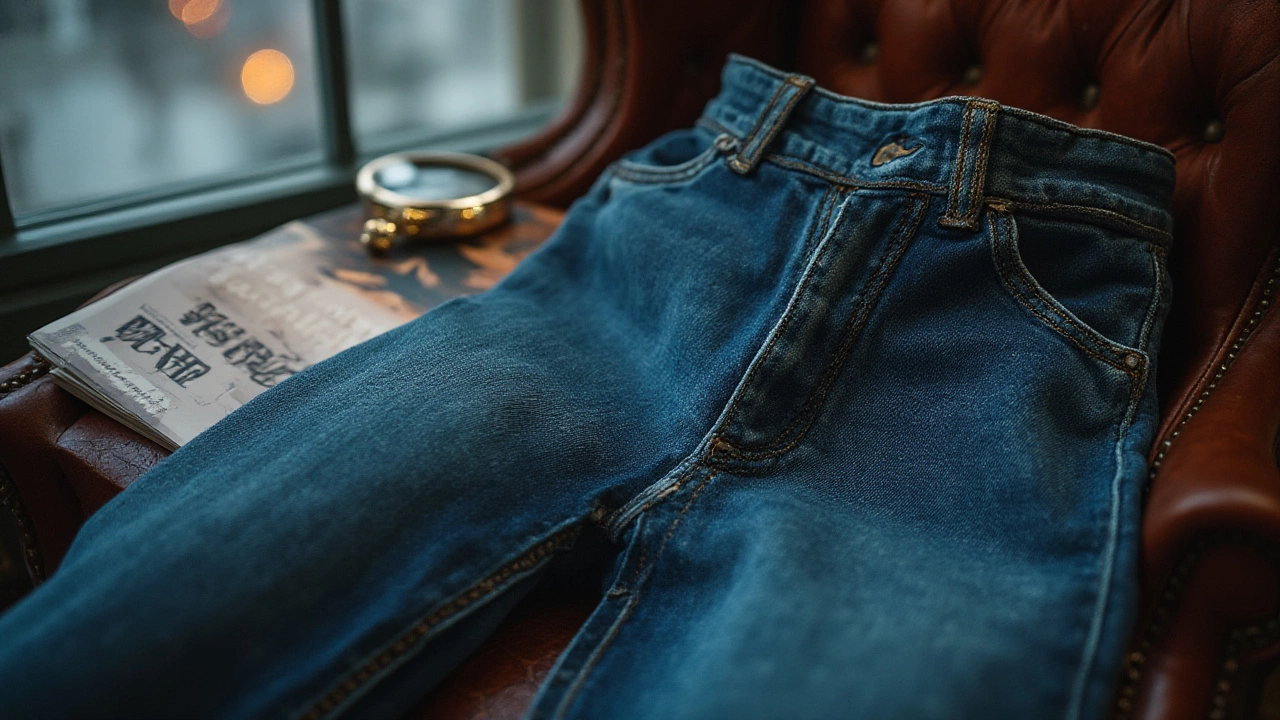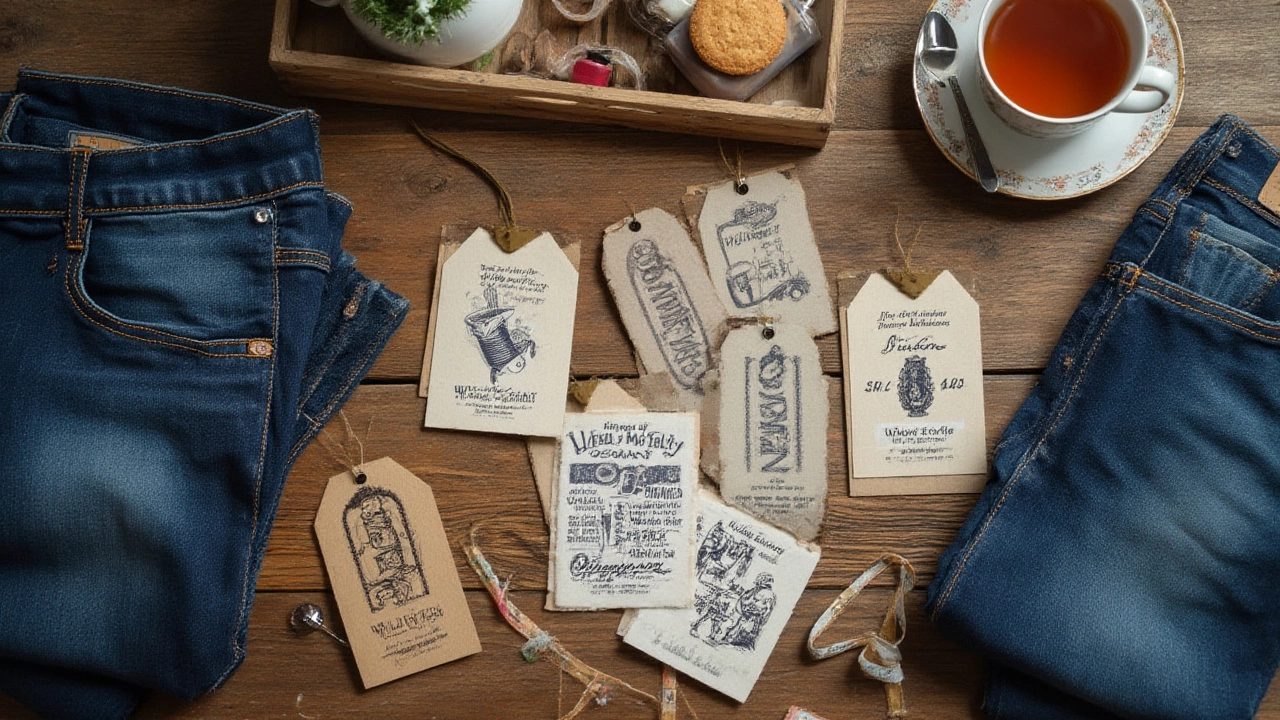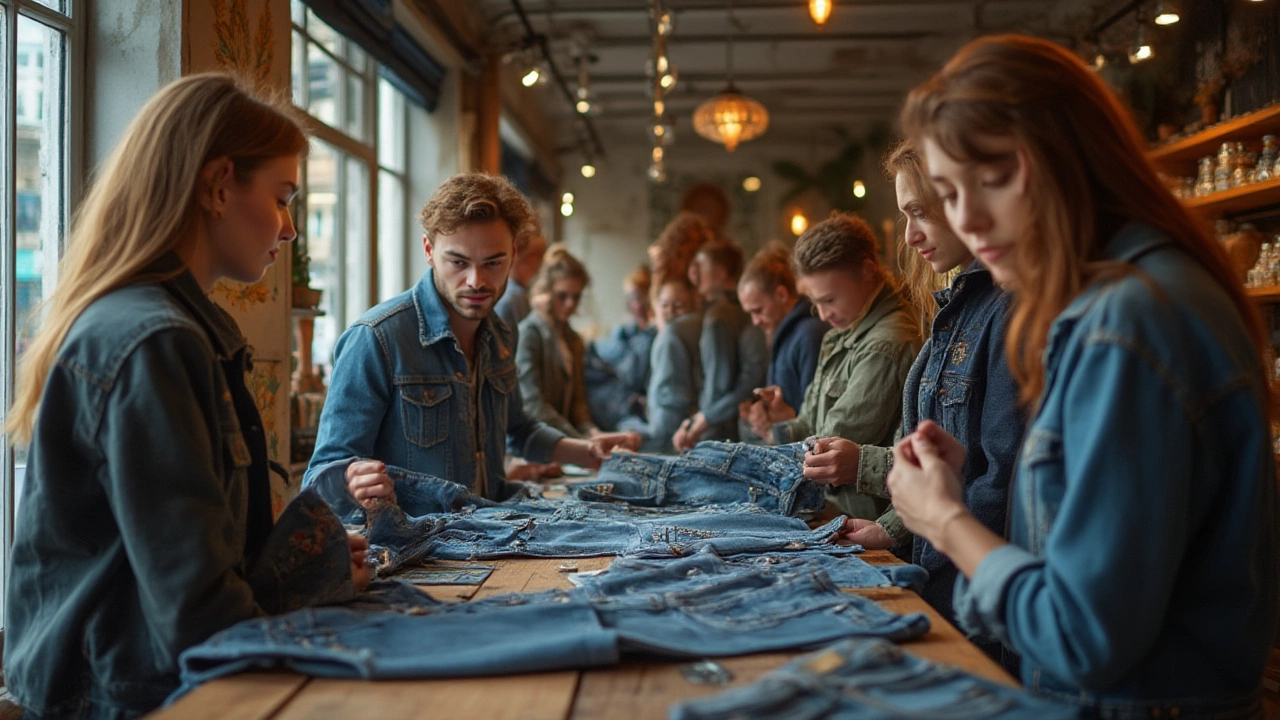Ever bought a pair of jeans, only to watch them sag, stretch, or rip after a few months? Turns out, jeans that look great on a hanger can disappoint pretty quickly if you don’t know what to look for. Folks in York, just like everywhere, want jeans that actually last—ones you can sit in at your mate’s back garden barbecue, or dash across cobbles in when you’re running late. But with racks full of denim at wildly different prices, how do you find the jeans that are more than just a pretty Instagram post?
What Makes Jeans High Quality?
Finding premium denim isn’t just about the label or paying way too much. It all starts with the fabric. The best jeans start their life as tightly-woven, heavyweight denim—usually weighing between 12 and 16 ounces per yard. This weight makes the fabric tough, so it doesn’t bag out on your knees or bum after a weekend wear. Shoppers often don’t realize how many jeans on the high street use lighter, cheaper materials to cut costs, which just don’t stand up to months of wear. Raw or selvedge denim, originally from Japan or the US, is famous for its strength and character. And while selvedge sounds fussy, you can spot it when you roll the cuff and see a neat, tightly woven edge, often with a red thread running through it. That’s not just for show—it stops the fabric from unraveling and proves quality control at the factory level.
But jeans aren’t just about material. Stitching is the unsung hero. Look closely at those seams—good jeans use double or even triple stitching, especially around stress points like pockets, belt loops, and the seat. Chain stitching on the hem adds extra strength and even creates cool fade lines if you’re a denim geek (I admit, I am). High quality brands use “bar tacks”—little bands of stitches that anchor weak spots, usually in gold or orange thread. If you see single-row, loose, or skipped stitches, or strings hanging off, put those jeans back on the shelf.
The details add up: rivets, made from copper or sturdy alloys, reinforce pocket corners. The zip or button fly should run smoothly, with all hardware engraved or black-branded. Pockets should be deep enough to actually use—small, shallow, or flimsily sewn pockets are a shortcut that top makers don’t take. Even the inside counts: check for finished inner seams and clean up of loose threads. Did you know Levi Strauss first added copper rivets in 1873 to keep miners’ pockets from tearing? We’ve thankfully moved on from gold mining in York, but the principle remains.
Here’s something few people know: some luxury brands rely on the same giant Asian factories as high street chains, while mid-tier brands sourcing from trustworthy Turkish or Italian mills often produce tougher, longer-lasting denim. Don’t assume fancy branding guarantees the best quality—do a pocket check, and take a peek at the inside label. A line like "100% cotton, made in Japan" or "14oz selvedge denim, Cone Mills" is usually a decent sign you’ve found something built to last, but be extra sharp with mixed blends. Spandex or elastane can make jeans more comfy, but higher than 2% in the blend means you’ll be buying a new pair before the year is out.
Let’s look at a concrete example. British denim brand Hiut—made in Cardigan, Wales—still uses slow, traditional machines. Each pair goes through up to 80 steps and loads of quality checks. Or try Edwin from Japan: their lines of selvedge jeans famously keep their shape and colour after years of muddy gigs or pub crawls. Quality means not just how it looks but how it holds up, and these brands have the numbers to back it.
| Brand | Denim Weight (oz/yd2) | Manufacturing country | No. of Quality Checks |
|---|---|---|---|
| Levi's 501 Selvedge | 14 | USA | 12+ |
| Hiut Denim | 13.5 | Wales, UK | 20+ |
| Edwin ED-55 | 14 | Japan | 30+ |
| Zara Basic Jeans | 9 | Bangladesh | 2-3 |
See that? The details matter more than the price tag. When I treat myself to new jeans, I put them through a quick stress test in the changing room: squat, sit, and pull at the fabric to check for snapback. If it creaks or you see warp gaps, leave them on the rail.

Fit, Feel and Function: How to Pick Jeans That Really Work for You
Great jeans should make you feel brilliant—confident, comfy, like you but better. But let’s not pretend: sizing is so random, even Julian tried on three pairs once before one finally fit his legs and waist at the same time. Bigger brands try to cut jeans that fit as many bodies as possible, which sounds good but leads to strange proportions, like massive waists or knees baggy as marshmallows.
Start by knowing what shape suits you. Most people have a favourite: skinny, slim, straight, or relaxed. Skinny jeans might look painted on, but they rarely hold up as long, especially at the inner thigh where fabric rubs. Straight and slim jeans tend to be most forgiving and stay sharp for longer. Try a high or mid-rise instead of a low rise—higher waistlines not only flatter most bodies, they also help jeans hold their shape as the waistband sits snugly and doesn’t creep down every time you bend over. I always get a laugh thinking how in 2010, I lived in hip-huggers, then spent years yanking them up at every bus stop. No more.
Then there’s the stretch. Some stretch is good for comfort (hello, curry nights at the King’s Arms), but too much means you’ll soon end up with saggy knees. Look for denim with a touch—1 or 2%—of elastane. Pinch the fabric. If it snaps back quickly, you’re golden. If it lingers and curls, expect wobbly knees next month.
Pockets deserve their own mention. Shallow pockets are my nightmare. Great jeans give you deep, reinforced pockets you can actually use—test yours with your phone or a train ticket. It’s a little thing but makes a big difference. Definitely check inseam length. Even if you plan to cuff your jeans, make sure they don’t drown your shoes or ride up your ankles. Lots of shops now offer multiple inseam choices—don’t just settle for "regular" if it’s not right for you.
Think about your lifestyle, too. If you’re outside a lot (say, hiking the Moors or tramping around York’s alleyways as I do with the dog), consider a roomier cut or heavier denim. For dressier nights, go for darker rinses. Black jeans fade fast—wash them inside out, in cold water, and always hang dry to keep the colour dark longer. Mum tip: if you need jeans for work, find pairs in a uniform-friendly indigo, with as few visible lines and distress marks as possible.
And yes, fit shifts after a few wears. Most 100% cotton jeans shrink a little on first wash—anywhere from 0.5% to 4%. Brands like Nudie or APC even tell you to wear them for six months before the first wash for the best fit (brave, if you spill coffee as often as I do). If you want low-fuss, go for pre-shrunk or "sanforized" denim, which cuts down on surprises in the laundry. If in doubt, buy jeans that fit snugly on day one—they’ll give a bit but not go baggy if you chose well.
Quick hack: don’t trust the label’s size number. Try three pairs around the number you think you are. Move, sit, and stretch in them. You want comfort, but not a saggy fit. And always try new jeans with the kind of shoes you actually wear most—nothing’s more disappointing than jeans that look perfect barefoot but awful with boots or trainers.

Buying Smarter: Longevity, Brands, and Care for Your Denim
Buying quality jeans can feel like a gamble—but it doesn’t need to drain your wallet. You won’t always need the flashiest brand. Focus instead on the mix of fabric, fit, and details. I swear by buying less but buying better. My oldest jeans are from Dr. Denim, and I’ve worn them from beach trips to bonfire nights, patched the knee once, and they still look sharp.
Look beyond just the logo. There are some safe bets for *high quality jeans*—Levi’s original line (especially 501s), Nudie Jeans (Swedish, and their organic range is fab), Hiut Denim (if you want to support British-made), Edwin (Japanese trustworthiness), and even some Uniqlo lines if you choose from their "Selvedge" series. Mass-market jeans can be fine for trends or throwaways, but they won’t hold up half as well in the long run.
If you want eco credentials, check for brands using organic cotton or recycled water in production, like Nudie or Mud Jeans. Denim manufacturing is resource-heavy—one pair of jeans can use up to 10,000 liters of water from cotton to shop floor. Some newer brands are cutting this drastically, using closed-loop recycling and dyes that don’t pollute rivers. Ever worried about microplastics from your washing machine? Hemp-blend jeans use even less water and fewer chemicals, though they do feel a bit rougher at first.
Some people balk at spending £100 or more on jeans. But if you do the maths, a £30 pair you replace every six months costs a lot more over four years than one £120 pair that you wear week in, week out. And well-made jeans keep their shape, colour, and stitching—and just look cooler as they age. The Japanese say your body’s curves become part of the denim’s story, which explains why Julian’s favourite pairs look a hundred times better now than when he first squeezed into them ten years ago.
Once you’ve snagged your dream pair, treat them right. Don’t overwash them (seriously, every two to three weeks is plenty, unless you roll in mud or spill a pint). Turn them inside out before washing. Use cold water and skip the tumble dryer. For raw denim, snap out dirt or let them air out—you’ll keep the fades rich and unique. If you get a small tear, try visible mending. Cool TikTok hack: Japanese sashiko stitching can actually make a rip look awesome instead of sad.
Here’s another data point that might surprise you: two-thirds of people in the UK wear their favourite pair of jeans at least twice a week, but only wash them once every ten wears (according to a 2023 Mintel survey). You can easily double the lifespan of well-made jeans by ditching the dryer and fixing small snags instead of binning them. If you ever outgrow them, top brands resell or recycle their old jeans—a win for your wallet and the planet.
To wrap it all up, picking the best jeans isn’t magic. Give the fabric a squeeze. Look inside for sturdy stitching and neat seams. Try them on, not just for style but to see how they move. Invest in brands that build to last, and you’ll spend a lot less time staring at saggy knees or faded pockets in your reflection. Now, go out, chuck on your best pair, and do something fun in them—because honestly, great jeans are about living, not just looking good.

